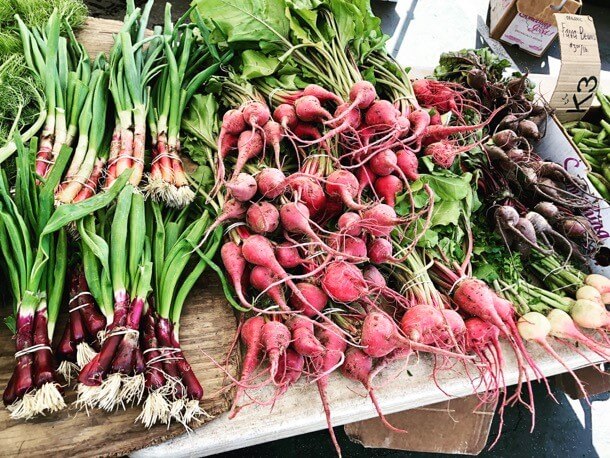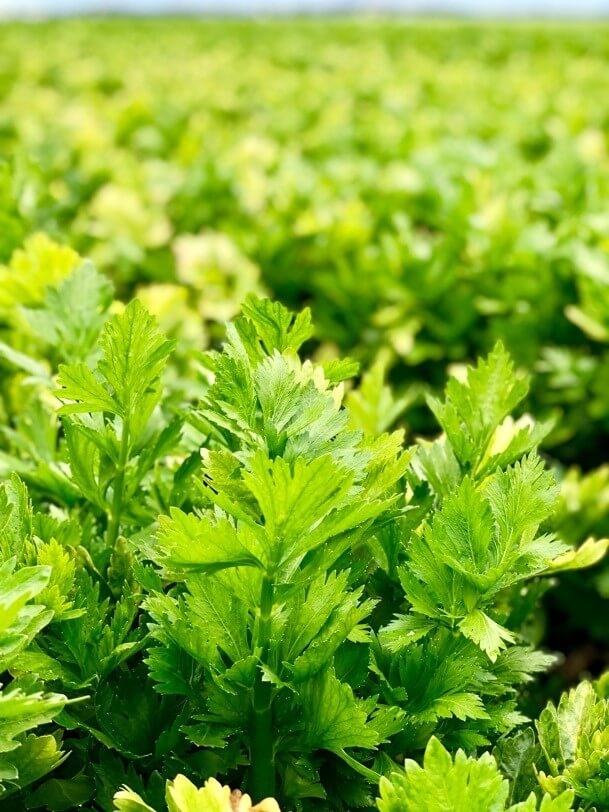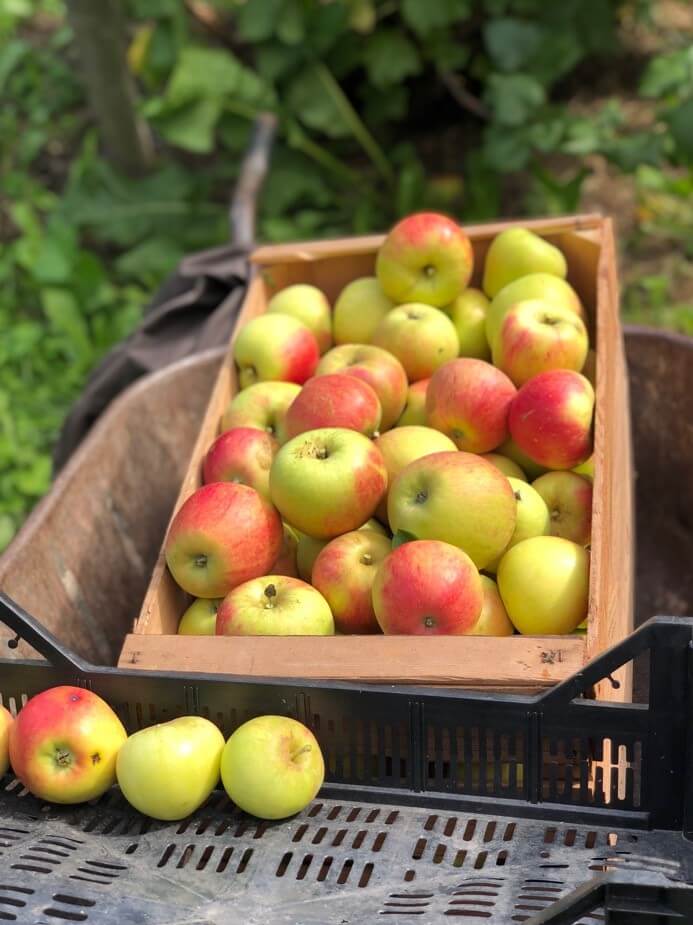Questioning Ethics in the Plant-Based Food Movement

The plant-based food movement has often been focused on higher socioeconomic communities, leaving marginalized people out of the conversation. Here’s what you can do about it.
There’s no doubt about it, the plant-based movement, in particular the vegan diet, has become increasingly popular. This has been a result of people striving to engage in healthier lifestyles, reduce their carbon footprint, and minimize animal suffering. However, the plant-based movement has largely been prominent within communities that have higher incomes, increased educational opportunities, and larger white populations, often leaving out BIPOC, as well as those who are less educated, have lower income, and deal with food insecurity. I believe issues of race and class are important to take into consideration within the plant-based movement, because this movement should highlight a positive eating philosophy that is inclusive to people of all backgrounds and cultures. Not to mention that BIPOC suffer from the impacts of poor nutrition—obesity, heart disease, and type 2 diabetes—disproportionately than their white peers.
The growing plant-based movement can be more vibrant and successful by creating a fair, just movement, accounting for issues like food security, nutrition, science, innovation, cultural foodways, diversity, and community. This is a complicated issue, which involves food policy action to ensure that communities have access to healthful plant-based foods in their communities through the availability of farmers markets, CSAs, and supermarkets that provide healthful plant-based foods, as well as food assistance programs, such as WIC, SNAP, and school programs. More images and stories of people of color need to be shared. Communities need to offer culturally specific support groups and meetups to promote healthy eating. Educators need to address the ways that culturally significant foods can fit into plant-based patterns. And most importantly, as a dietitian, I believe that we need to dig into the indigenous plant-based roots of cultures, such as Africa, Asia, and Central America, to make healthy eating compelling to all. For example, learning the traditions of eating wild greens in West Africa, tofu in Asia, and the three sisters (beans, squash, and maize) in Central America can inspire pride and interest among people from these cultural backgrounds.
That’s why I asked a few of my favorite plant-based dietitians (see their bios below) from a variety of backgrounds and settings to weigh in on the ethical issues within the plant-based movement. I published an entire article on this in Today’s Dietitian, but today I’m sharing the full excerpt of their interview with you. Read on for how you—as part of the food system—can help do your part for a fair plant-based food movement.

Sharon: Why has the plant-based movement often been mainly prominent among white, middle to upper class communities, rather than those of various ethnicities, cultures, and socio-economic status?
Wendy Castro-Harris: Healthful foods are often seen as a privilege instead of a right, and the plant-based movements are also often showcased in a way that parallels that. For many BIPOC, plant-based eating can feel disconnected from cultural foods due to lack of representation so that can continue to hinder the growth of the plant based movement in communities of color.
Lilian Correa: Plant-centered eating is common among various cultures and ethnicities. Latinx communities encompassing Central/South America and the Caribbean, for example, all feature varieties of beans and rice as common nutritional staples. And while, plant-based eating forms the basis of cuisines amongst a variety of cultures, the actual movement promoting plant-based nutrition in the United States was started by organizations within white, middle to upper class communities. In addition, some of the key founders of the specific “whole food, plant-based” (WFPB), health-centric nutrition movement belong to white, middle to upper class groups, thus the organizations that developed in their wake tended to reflect similar populations in their marketing and educational materials. Coupled with pre-existent health disparities (including access to health education) within communities of color, this targeted marketing widened the cultural gap.
The continued prominence of the whole food plant-based nutrition movement in white, middle to upper class communities may also be reflective of larger, structural issues. This includes the common underrepresentation of communities of color within established medical societies/organizations and in popular “health” media.
In the last few years, however, more medical organizations centered around the plant-based nutrition message like the Physicians Committee for Responsible Medicine and the American College of Lifestyle Medicine, have begun to address lack of diversity by continually seeking to create educational content and programs which are culturally relevant and encompass all socio-economic statuses.
Kaelyn Johnson: The plant-based movement, from my experience, has been viewed as a privileged and expensive way of eating which deterred individuals from different cultures and socioeconomic classes from being interested in it.

Sharon: How are things changing among cultures, communities, and BIPOC?
Wendy Castro-Harris: Plant foods have always been a major staple of all BIPOC cultures. For the Black community, the centuries of enslavement were a time when enslaved peoples only got food scraps. Because they were creative and resilient, they turned those scraps into beautiful and delicious Southern dishes that are still cherished today (Food Justice: A Primer). However, those meals weren’t traditional dishes to Africa – traditional African diets, though varied by country, are rich in plant foods like tubers, maize, and beans. For the Latinx and Asian communities, being immigrants in this country has resulted in a lot of our communities assimilating to American culture (to belong), and eating the “American diet.” The recent growth in the plant-based movement among BIPOC is our people finally deciding to take back what was taken from us – the liberation to eat healthful foods that sustain us and increase our longevity. For many BIPOC, it’s a road to liberation.
Lilian Correa: In the last few years, plant-based diets have gained a lot of attention in the realms of health, longevity, and environmental sustainability. As a society, we have also started to delve deeper into the factors causing health disparities among communities of color. These factors include food justice, food security, and social determinants of health. Racism is a public health crisis sitting at the epicenter of these issues.
There is growing recognition that food can either enhance health or perpetuate disease, and that chronic conditions such as heart disease and Type 2 Diabetes disproportionately impact Black and Latinx communities. The recent rise of publications specifically concerning the health and longevity of our communities drives the plant-based movement among people of color.
Latinx and Black communities are eager to improve their health and are becoming increasingly invested in plant-based nutrition. One such approach is by giving traditional foods a healthier, “plant-based” spin. Latinx and Black communities have intimate ties to expressing their cultures and family traditions through the art of cooking. Thus, there is enthusiasm and energy around the notion that for improved health, we can join a food movement that, until recently, has been prominent with white, middle to upper class communities. And, in turn, we can contribute to it a myriad of ingredients and our unique sazon.
Morgan McGhee: As a black dietitian who has worked in school nutrition for my entire career, I see black and brown communities being empowered to decolonize their food through education and exposure. We have to first admit the ways our own thinking has been impacted by systemic oppression then actively engage in dismantling it. Marginalized communities are starting to ask essential questions and truly get back to the original foodways of their ancestors.
Kaelyn Johnson: The younger generations in general including POC seem to be gaining interest in the ethical and health benefits side of the vegan diet. With various documentaries like “Game Changers” and “What the Health” being available, more people in communities that felt wary or not included in the vegan/plant based movement are starting to see its benefits for themselves, the animals and the environment.
There are also social media personalities like Tabitha Brown from TikTok/Twitter/Instagram who posts recipe videos that use simple and easy to find ingredients that make the plant based movement approachable.

Sharon: Does food culture interfere and/or enhance the link to plant-based eating?
Wendy Castro-Harris: So much about BIPOC diets have changed as a result of colonization. The movement to “decolonize our diets” is a path to returning to the diets of our ancestors which may not have been fully plant-based, but were definitely plant heavy. However, “diet culture” as a whole, which is not just an American concept, rather a concept rooted in whiteness, negatively impacts plant-based eating. People don’t often consider plant-based eating or veganism because they have concerns about satiety, and many think that it doesn’t align with their lifestyle. However, I believe that mindset has been passed down to us from past generations. The rich & elite have always had access to meat, and people living in poverty have gotten mostly plant (or other undesirable) foods. Back then, meat and animal products were seen as a treat, so I personally think that subconsciously, there is concern for many that letting go of meat would mean letting go of some form of power, status, and indication of wealth.
Lilian Correa: From a Latina immigrant perspective, there’s a certain sense of nostalgia pushing us to reclaim, showcase, and pass on the food culture and traditions that our parents and grandparents brought to this country. Many of these food traditions are rooted in plant-based nutrition. Thus, showcasing our cuisines enhances our links to a plant-based diet, and plant-based eating showcases our cultural heritage.
Morgan McGhee: Food culture absolutely enhances links to plant-based eating. If we know our history, plant-based foods were a cornerstone in the diet of enslaved Africans; whether it’s black-eyed peas, okra or watermelon, the food consumed by ancestors is alive and well in the culture today. Unfortunately, through colonial rhetoric, many have fallen into the belief that many ancestral foods are “bad” or “unhealthy” which leads an individual (eg a child) to think that they are then “unhealthy” or “bad” which is a form of white supremacy. Once we start to truly understand our cultural foodways we can decolonize our diets and perhaps a more plant forward way of eating.
Kaelyn Johnson: Many cultures have historical roots in plant-based eating so the link between the two is enhanced by this. A blatant example of this would be Indian culture and cuisine that is heavily vegetarian influenced.

Sharon: What can dietitians do who work with plant-based diets to help make these diets more approachable, culturally relevant, and culturally sensitive for people of all communities?
Wendy Castro-Harris: Food is rooted in our familial and cultural traditions, so as dietitians, it is our job to listen and learn from the communities we work in and with. It’s important for us to not try to erase their cultures by asking them to conform to eurocentric veganism.
Lilian Correa: First, we can learn to listen to our patients more, and be curiously engaged with their culture and traditions. When patients share the ingredients in their kitchens, the foods they grew up with, and foods of their cultures, we often find the answers we were looking for right in the conversation. Additionally, we can also get into the kitchen ourselves and try out new recipes from different cultures, or go to restaurants with an aim to explore various cuisines. Such experiential learning better equips us to suggest substitutions, if necessary, that will be familiar or similar in texture/flavor while providing healthier options for patients.
Morgan McGhee: First, educate yourself and clients on the cultural foodways as told my folx from those cultures. Second, empower communities through food sovereignty. Agricultural practices are prevalent in many cultures – and food sovereignty can empower communities to define their own sustainable system. As you go on this journey with your client or community, recognize that unless you are a member of that community that you are a guest. This does not mean that you don’t ask questions to spark conversations on exploring various preparation methods, seasonings or more plant-forward alternatives – but if you’re truly there to “serve” the community, you have to do just that on THEIR timeline and in their way.
Kaelyn Johnson: Any meal that involves meat and other animal products can be adapted to taste and look like the original meal in question. Dietitians can act as a resource to help expose individuals interested in plant based diets to how such a diet can be fit to cultural/traditional meals that they love and enjoy. There are various meat substitutes for purchase or ones you can make at home to season as you would meat. This also goes for the myriad of milk and cheese substitutes.

Sharon: How can these diets fit into all budgets and food access levels, when we think about lower socio-economic communities, food deserts, SNAP, and food security?
Wendy Castro-Harris: The first step is realizing that plant-based diets are a privilege in many communities. It is a difficult challenge because of systemic racism seen from farming practices all the way to food access. While some believe that BIPOC want to be plagued with chronic diseases and eat fast food every day, that is just not reality. The fact that the U.S. spends so much of its land and water resources for animal agriculture (for food) rather than on humans is a glimpse into the structural complexities that exist. It’s also important to note that access alone doesn’t change food selection – we as dietitians have to advocate for policy change to increase funding for farmers of color, funding for further farm to school and gardening grant opportunities, and for relevant community nutrition education. Most importantly, we must also be willing to enter communities asking them what their community needs and goals are and how plant-based eating fits into that.
Lilian Correa: This is where the RD needs to partner with social workers, or if one is not available, familiarize yourself with the community services available where you serve. Know your local food pantries; visit them to see what they offer. Perform a basic Google search of grocery stores in the area; stores will often have weekly sales ads online. Find out if local stores are equipped with frozen and canned vegetables/beans. Have a few nutritious, inexpensive meal recipes up your sleeve. Test the popularity of recipes across populations. Patients will often come back and tell you which ones they made and how they liked them. Hang on to those you’ll come to know as “old reliables.” If a box store is a patient’s only option, lean on those weekly ads. Teach patients how to shop for the most nutritious ingredients from what’s available. Encourage your patients to purchase local produce in season, when it’s less expensive, and how to freeze it to extend its shelf-life. It takes a little detective work, but there are a variety of ways to incorporate plant-based eating as part of a healthy diet no matter what your patient’s socio-economic status.
Morgan McGhee: This is a challenge I am working on now with a group of RDs – it is VERY difficult but we are working hard to make it happen. I like to think of it as “reimagining” traditional items found at pantries or at a corner store. Also consider utilizing bulk food items where possible and truly simplifying food. For example, I like to see the new school “bowl’ concept very reminiscent of traditional southern casseroles. You take the same elements of a whole grain, with a plant-based protein eg beans and roasted fresh or frozen veggies and you essentially have a casserole; and I always have a sauce, whether it’s hot sauce or a salsa to kick up the flavor profile.
Kaelyn Johnson: Eating a plant-based diet is one of the cheapest options available. Especially if a whole foods plant diet is followed. Because beans, vegetables, fruit and grains are the most affordable items in the grocery store. Discount stores like the 99 cent store, have rice, canned beans and vegetables as well as a produce section. SNAP participants can use some of their benefits to purchase plant-based items in the grocery store. There are also food banks and Meals on Wheels available depending on certain eligibility factors.

Sharon: How can dietitians tap into the cultural roots of traditional diets to help connect people to healthy plant-based eating?
Wendy Castro-Harris: This is a tricky thing because a majority of dietitians are white, and care needs to be had so that cultural appropriation does not occur. Here are some helpful suggestions for white dietitians:
1) Understand that you are not the expert when it comes to a different community’s culture & overall eating pattern
2) Know that all people within a culture are not a monolith – if working with a Mexican community, don’t assume that all Mexicans are alike, let alone eat the same foods.
3) Find dietitians who belong to the community or who are of the same ethnicity/race of the community you are working with, and read/listen to what they share. Use search engines to lead you to answers to questions you may have after reading/listening to their content (be sure to focus on sources created by BIPOC).
4) If recreating a recipe, consider if you are changing it simply to healthify it. If so, a more culturally competent approach is to discuss balanced eating with the community so that they understand that all foods fit
5) If you will be making recipes and need to modify them based on things like ingredient availability, etc. or adding in more veggies (when it makes sense), make sure to use recipes originally shared by BIPOC (not other white people), and be sure to give them credit
Lilian Correa: Beans, rice, and vegetables are already foundational ingredients across South American, Central American and Caribbean cuisine. So, I often ask my Latinx patients, “what was your favorite meal when you were growing up?” Or, “was there a certain food staple that your family just could not do without?” These questions often evoke memories of Abuela’s hand-rolled corn tortillas served with a spicy bean stew that could warm the soul in the coldest of days. Listen to these stories, and ask more questions. People often love to share stories about family food traditions.
Morgan McGhee: Have discussions on preparation method and alternative sources of seasoning. In the traditional African American diet, there are plenty of cultural plant-based options but maybe let’s leave out the bacon drippings and opt for a just as flavorful substitute. I’ve served a plant-based macaroni and cheese during plenty of holiday dinners that fooled many unassuming relatives. If it’s visually appealing, tasty and plant-based, everyone wins!
Kaelyn Johnson: A meal can be shared with a dietitian who then can help the individual adapt it to be plant based. Which can be done through using meat substitutes (tofu, seitan, tempeh, soy based meat substitutes, etc.), milk (almond, cashew, oat) or cheese (Daiya, Miyoko’s). This in particular is why it is important for dietitians who are also POC to bring their knowledge and insight to the table when discussing plant based eating and meal adaption.
Sharon: Is there anything else you’d like to add to this discussion?
Morgan McGhee: As someone who worked in school nutrition, while I felt it was my responsibility to expose students to various plant-forward options in eating, we must truly realize that we can’t “force” or “coerce” someone to adopt our personal food practices. Yes, I practice a plant-forward diet at home and was proud to offer children salad bars in schools but they also had pizza and that’s okay. When you link access to education and other experiential learning opportunities, communities and individuals can truly start to feel empowered on their personal journey to health and healing.
Kaelyn Johnson: If you or someone you know is interested in a plant-based diet start out slow. Try to incorporate “Meatless Mondays” into your week and work your way up from there. And the internet is your friend! Any possible meal you can think of is very likely to have a vegan adaption/version online.
Thank you to our experts!

Wendy Castro-Harris, MS, RDN
Commerce, CA
Director of Nutrition at Better 4 You Meals
IG: @wcastroharris.rd

Lilian Correa, MPH, RD
Dietitian for the new Plant-Based Lifestyle Medicine Program at Bellevue Hospital
New York, New York
IG: @lilyc_rd

Morgan McGhee, MPH, RD
Director of School Nutrition Leadership at Food Corps, Washington D.C.
IG: @moghee; Twitter: @speakingtheghee

Kaelyn Johnson, MPH, RD
Renal Dietitian at U.S. Renal Care, Torrance, CA
Written by Sharon Palmer, MSFS, RDN with Savanna Malki, Dietetic Intern
Photos by Sharon Palmer


